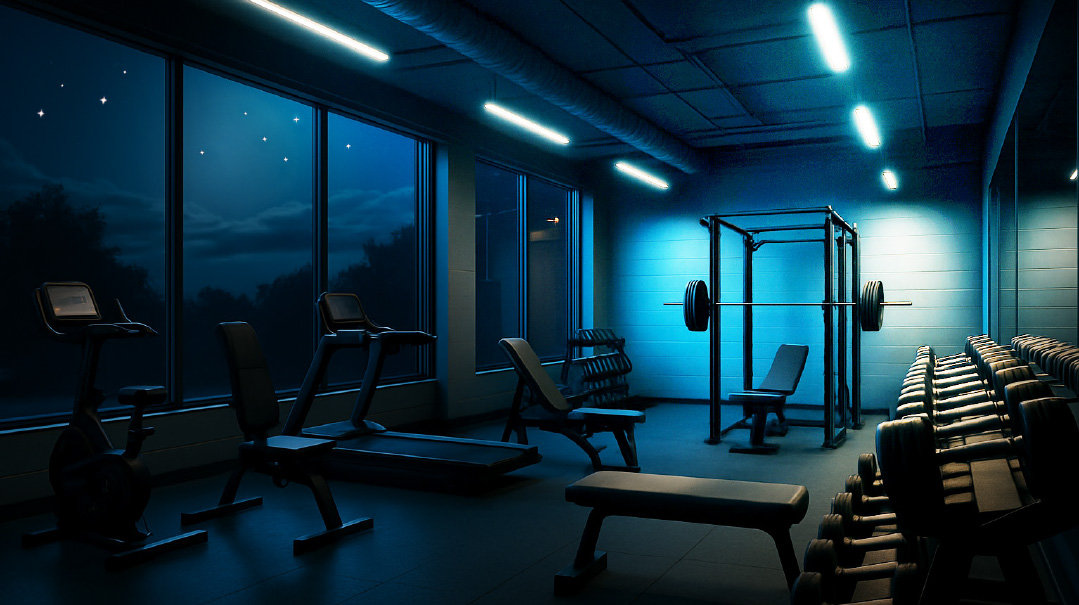Fitness IQ: Research Roundup

Tidbits to improve your fitness levels and well-being

Does Nighttime Exercise Help or Harm Sleep?
Nighttime exercise has the potential to provide a better night of sleep or keep you awake. It all depends on how it’s done.
Vigorous exercise right before bed can get in the way of sleep. The post-workout rush creates a sense of alertness. Elevated heart rate, higher core body temperature, and the release of endorphins all signal to the body that it’s time to wake up. Sore muscles resulting from an intense session may also keep you up.
If you suffer from insomnia, or find it challenging to get a good night’s sleep, you may want to consider modifying your nighttime exercise routine. In order to prevent any disruption to your sleep, try not to exercise after 8 p.m. If that’s difficult, make sure your workout ends at least an hour before you plan to head to bed.
Even better is to tailor a nighttime workout that actually contributes to a better night of sleep. Several studies prove that exercising before bed helped people fall asleep faster, sleep more deeply, and stay asleep longer. The key is to choose exercise that improves sleep. Aim for shorter, less intense sessions. Moderate aerobics, which has been proven to lead to deeper sleep, is an excellent choice. Light strength exercise is another good option, as is yoga. These exercises allow the body to decompress, and also stabilize mood, both which lead to better sleep.
Prenatal Exercise Protects Against Asthma
Exercising during pregnancy isn’t only safe, but has multiple benefits for both the mother and baby. For the mom, it lowers the risk of preeclampsia, high blood pressure, and gestational diabetes, and also prepares her body for labor and delivery. Babies whose moms exercised while pregnant have better organ development, and better protection against chronic diseases like obesity and cardiovascular disease.
One study even showed that prenatal exercise contributed to the development of a baby’s neuromotor skills. Another showed babies whose mothers exercised had a stronger heartbeat at birth.
Now a new study shows that prenatal exercise can prevent a child from developing asthma. The study, conducted in Finland, followed more than 900 mothers and their babies for several years. Data was collected on the mother’s exercise habits and whether the child developed asthma. The mothers were asked if they exercised during pregnancy, and how often. Researchers concluded that pregnant women who exercised three times a week or more reduced their child’s asthma risk by almost 50 percent.
The findings seem to indicate that prenatal exercise contributes to the healthy lung development of the fetus, resulting in stronger lung function in newborns. This, in turn, provides protection against developing asthma during childhood.
Until now, doctors had advised pregnant women to avoid cigarette smoke in order to reduce their child’s risk of developing asthma. The results of this study demonstrate maternal prenatal exercise may be as effective a protection as cigarette smoke avoidance.
How Long Can You Stand On One Leg?
Your ability to balance on one leg says a lot about how you’re aging.
A recent study at the Mayo Clinic focused on how well people were aging. They tested 40 healthy adults over the age of 50, half of whom were over 65. The research tests focused on grip strength, knee strength, gait, and balance.
For the balance tests, researchers had the participants balance on each leg with eyes opened and eyes closed.
Standing on one leg showed the highest rate of decline — higher than muscle mass or gait.
“Balance is an important measure because, in addition to muscle strength, it requires input from vision, the vestibular system, and the somatosensory systems,” says Kenton Kaufman, Ph.D., senior author of the study and director of the Motion Analysis Laboratory at Mayo Clinic.
“Changes in balance are noteworthy. If you have poor balance, you’re at risk of falling, whether or not you’re moving. Falls are a severe health risk with serious consequences.” Falls are the leading cause of injury in adults over 65.
This isn’t the first study to show a correlation between balance and longevity. Another study conducted in 2022 found that those who were unable to balance on one leg for ten seconds had an 84 percent increased risk of death over the next seven years.
There are exercises that improve balance. Try brushing your teeth while standing on one leg, standing up from a chair without using your hands, or walk in a line heel to toe. If you prefer a class, consider yoga or tai chi.
How Fit Am I Really?
One way to determine your level of physical fitness and aerobic capacity is by measuring your VO2 max. This is the maximum amount of oxygen your body is able to use during exercise. (V stands for volume, O2 is oxygen.) A higher score indicates a better level of fitness.
As you breathe, your lungs absorb oxygen and transport it to your muscles, where it’s converted to energy. The more oxygen you can breathe in, the more energy your muscles get. Your muscles want that oxygen — that’s why we tend to breathe faster during an intense workout.
To determine an accurate measurement of your VO2 max, you’d need a lab, but there are online tools to help you estimate yours.
If you can improve your VO2 max, you can improve your fitness level. If you aren’t active, try walking or brisk walking to raise your levels. If you are active, incorporate HIIT (high intensity interval training) workouts.
You could also switch up your workout routine. Add some time to your usual exercise session, and try increasing your pace.
Research shows that a better VO2 max helps you maintain health physical fitness later in life. You may also notice more immediate results. Increased VO2 max can help you feel less exhausted after climbing the stairs, less stressed, and has been shown to boost the immune system, as well.
(Originally featured in Family First, Issue 940)
Oops! We could not locate your form.







